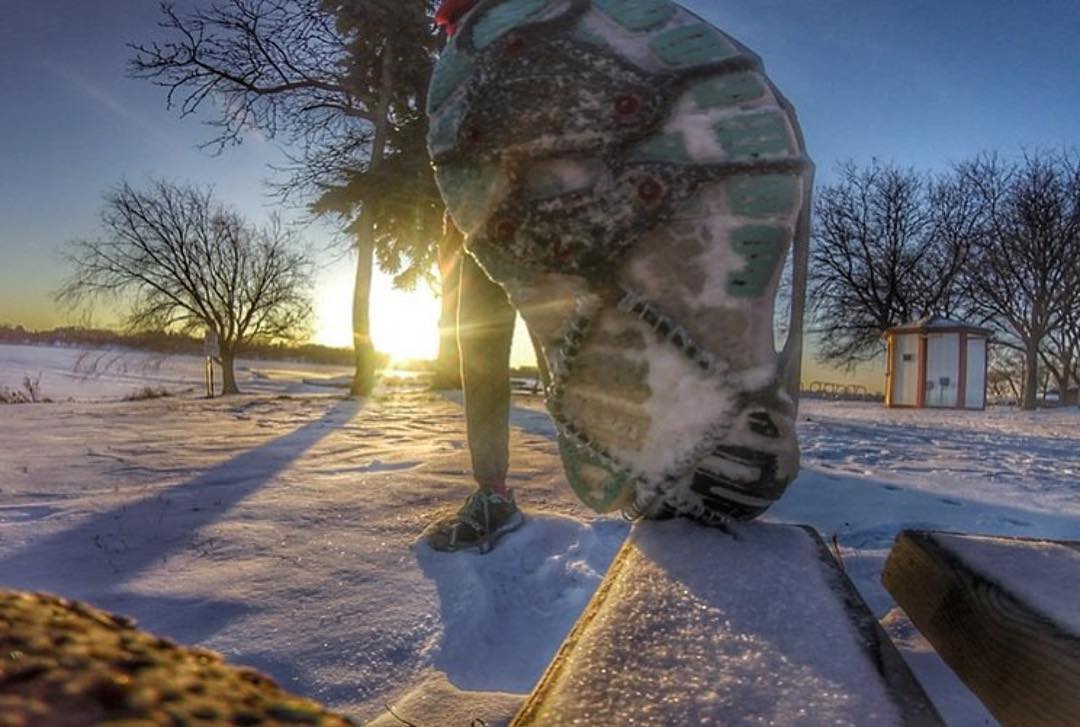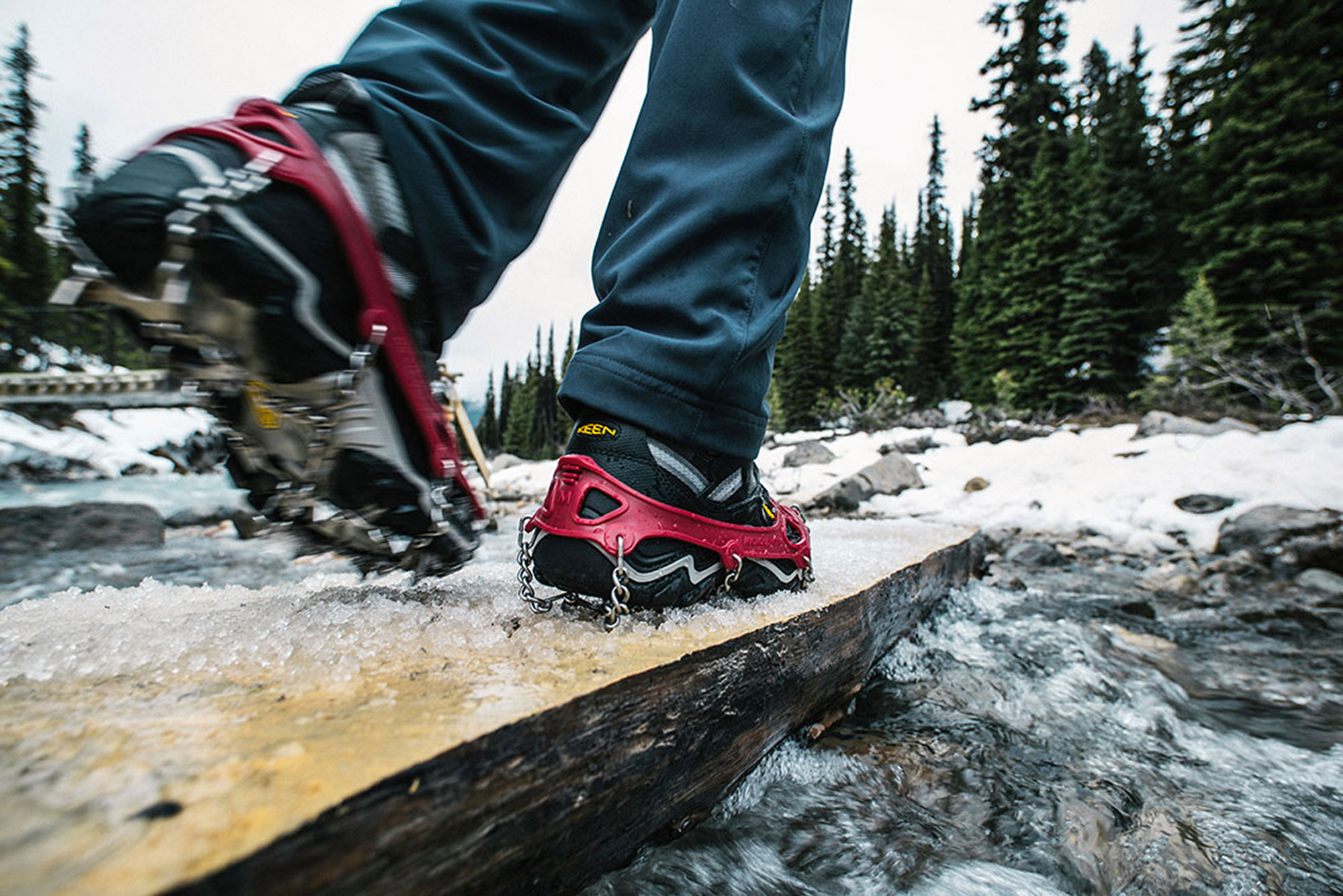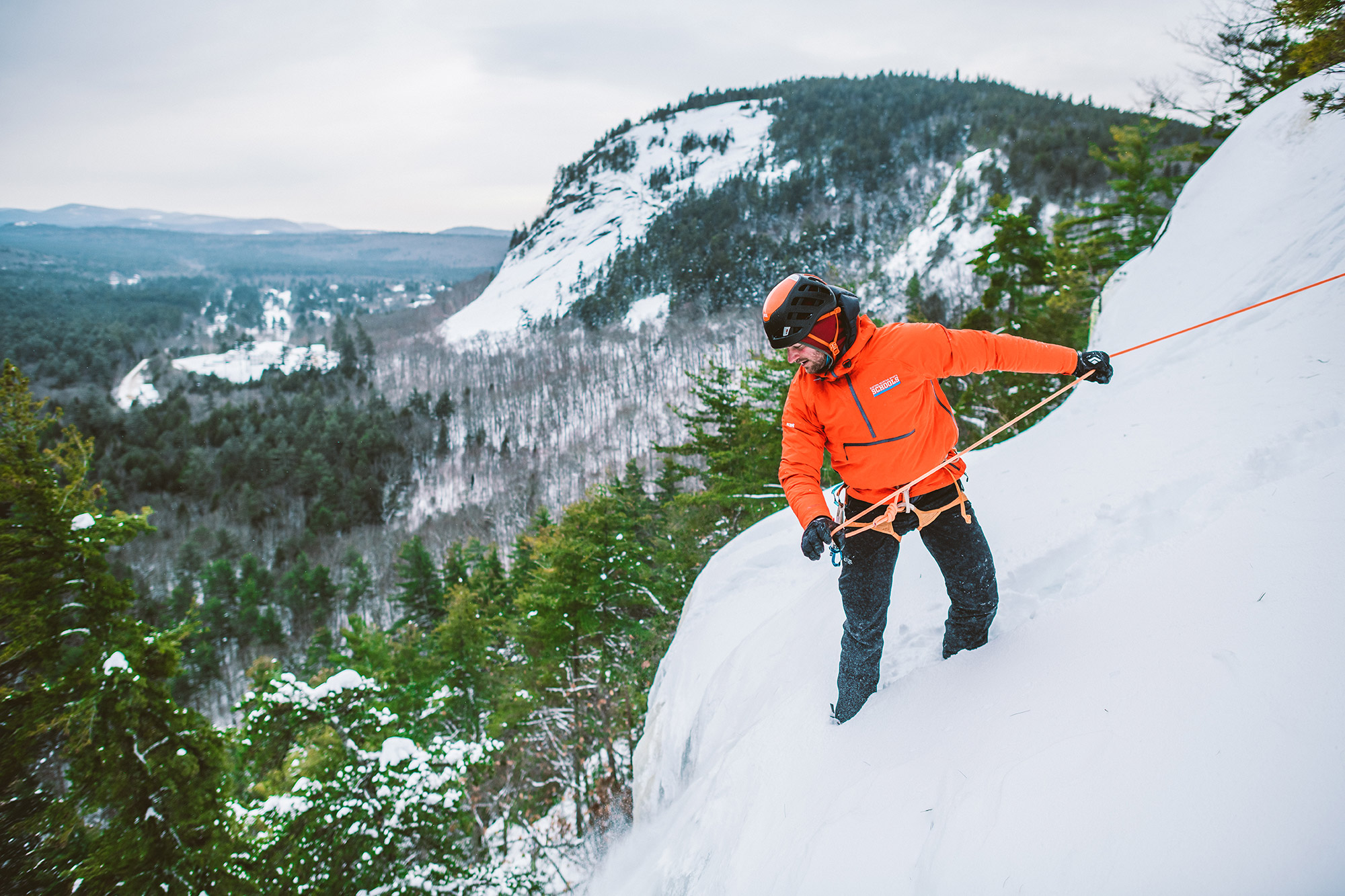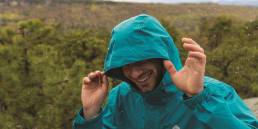Picture it: The snow starts to melt on your sidewalk or the trail, only to reveal a layer of clear, hidden ice. Or, there’s snow packed so firm it might as well be clear blue. Then, after a few days of warming weather, a flash freeze turns all the running water to ice. Because hard, slick surfaces can cause some nasty slips and falls, traction is obviously important during the colder months, and it is also vital to hiking safely during late winter and early spring.

Traction for Everyday Use
The very bottom level of winter traction is what you need for taking the trash out, walking the dog, or checking the mailbox to see if that new EMS purchase has arrived. During your standard daily activities, it’s still possible to encounter some slick ice that requires just a bit more traction than your boots themselves provide. That extra edge may prevent an unexpected slip resulting in a twisted ankle or broken wrist. As examples, Yaktrax and STABILicers provide sturdier footing in just about any day-to-day situation.
These products’ limitations typically lie within their actual gripping capabilities, however. Items like Yaktrax and STABILicers don’t have teeth that really dig into ice and grip it well. Instead, they merely sink into the surface, mainly where it’s softer, to deter any unwanted slips. When you start getting into hard-packed snow and actual ice accumulation, you’ll need some real teeth for a stronger grip.

A Little Burlier
Heading off-road? You might want something sharper and stronger. Taking a walk at the local nature preserve, heading up a well-traveled mountain for a quick hike, or even peak-bagging a 4,000-footer in the Northeast on a hard-packed trail requires more grip than Yaktrax can provide. This is due to the fact that the ice (and even hard-packed snow) found during a hike tends to be much thicker and harder. Therefore, you need something more aggressive to safely and securely grip the ground, because sitting on the surface won’t provide much security.
That’s where products like Kahtoola MICROspikes and Hillsound FreeSteps6 come into play. Similar in design and functionality, both of these devices feature longer, tougher spikes. These products work great on hard-packed trails, and even on a good amount of softer ice that you’ll encounter on open summits or highly traveled trails.

For the Real Steeps
Unfortunately, MICROspikes and FreeSteps6 don’t cut it every time, and that’s where actual crampons come into play. Often, glass-like ice that coats an entire open summit is far too hard for these to bite into. Or, it’s too steep for them to grasp, which can result in slipping and falling at very inopportune times. For such occasions, full crampons are the way to go.
When it comes to crampons, there are essentially two categories to consider. The most expensive (usually $175 and up) is designed for mountaineering or ice climbing. Products like the Black Diamond Contact Crampons are some of the toughest, most aggressive models on the market. However, unless you are going to be doing these specific activities, slightly less-aggressive crampons still give you dependable traction in treacherous conditions without overdoing it. Falling into this category are the Hillsound Trail Pro Crampon, the Kahtoola K10 Crampon, and the Grivel G1 Crampon. All offer a much more aggressive spike to hold onto that hard ice, giving you peace of mind and increased safety as you trek along the icy Ridge Trail heading up Giant Mountain.
Ice and Snow?
Last but not least, it’s time to talk snowshoes. Easily the most indispensable of all winter traction devices, snowshoes are what make winter hiking even remotely possible. When there’s enough snow on the ground, they prevent you from sinking in and from using more energy than necessary to head down the trail. Even then, realize they’re not legally required for walking the trails, except in the Adirondacks’ High Peaks Wilderness, where eight inches or more of snow calls for snowshoes or skis.
But, most also include a degree of traction for when the snow firms up or gets mixed in with ice. On long day hikes where you could encounter deep snow below treeline and hard ice on a mountain summit, snowshoes with more traction, like the MSR Evos, may eliminate the need to carry a separate set of crampons.
No matter what your winter activities are, be sure to have the proper traction with you at all times, and above all, be safe and have fun!
Joshua Myers
Josh is an avid hiker, trail runner and photographer. He's a New York native who always had a passion for the outdoors, but didn't do a lot of hiking until the summer of 2016. Since then, he has completed almost 3 rounds of the 46 high peaks, including a single-winter 46 this past season. This past fall, he completed the NE111, doing all 115 mountains in only 366 days. He is currently enjoying having no set plans or schedule, hiking and climbing at leisure whenever the opportunity arises.




